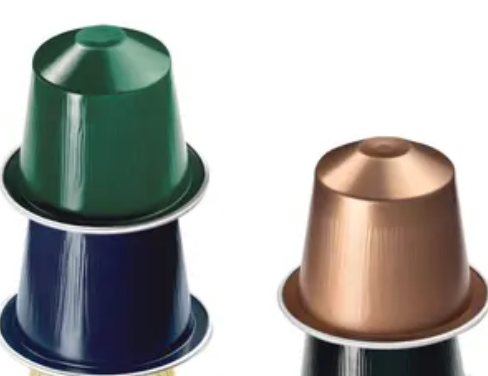In 1975, a young engineer named Eric Favre took a trip to Rome that would change the history of coffee.
1975年,一位名叫埃里克·法夫爾的工程師去羅馬旅行,此行將改變咖啡的歷史。
Favre had recently started working at Nestle’s headquarters in Vevey, Switzerland,
法弗雷最近開始在雀巢位于瑞士沃維的總部工作,
and one of his first projects was to develop a machine
他的第一個項目就是開發一臺機器,
that would combine the convenience of domestic coffee with the quality of an Italian espresso bar,
這臺機器可以將家庭咖啡的便捷和咖啡店里意大利濃縮咖啡的質量結合起來。
where customers paid more for a product made by an expert using large, expensive equipment.
在咖啡店,顧客會為能手使用大型,昂貴的設備制成的產品花更多的錢。
Successful products can look inevitable in hindsight, but the gap in the market wasn’t obvious.
事后來看,成功產品是必然會出現的,但是當時市場的缺口不是那么明顯。
At the time, two kinds of coffee were drunk at home.
當時,人們在家中喝兩種咖啡。
There was roast and ground, which was tasty but laborious, whether prepared in a cafetiere, stove-top or filter machine.
一種是烤的和磨碎的咖啡,味道很好,但很費力,不管是用咖啡機、爐灶還是過濾器來做。
Or there was soluble instant coffee, which was quick and easy but had an unsubtle flavour.
一種是速溶咖啡,既快速又簡單,但味道不太精細。
To be tempting at a higher price, Favre’s new machine had to offer high-quality coffee with the speed and ease of instant.
為了以更高的價格吸引顧客,法夫爾的機器必須得以速溶咖啡的速度和簡便的方式制作高質量的咖啡。
Wandering through the centre of Rome, Favre noticed a long queue snaking from a coffee bar near the Pantheon.
在羅馬市中心漫步時,法夫爾注意到萬神殿附近的一家咖啡館里排著蜿蜒長隊。
Plenty of other cafes nearby used the same machines. What was it about this place, Favre wondered, that made it so special?
附近的許多咖啡館都使用同樣的機器。法夫爾好奇,到底是什么讓這個地方如此特別?
Inside, the barista explained that other operators pumped the piston just once before releasing the coffee.
在里面,咖啡師解釋說,在釋放咖啡之前,其他操作人員只對活塞進行一次泵送。
But at Sant’Eustachio Il Caffe, the baristas pumped repeatedly.
但在鹿角咖啡店,咖啡師們反復地進行泵送。

This meant they forced more water and air into the ground beans, which meant greater oxidisation,
這意味著他們將更多的水和空氣注入到咖啡豆中,這意味著更多的氧化作用,
which drew out more flavour from the beans and produced more of a crema – the layer of foam formed on top of a good espresso.
這將使咖啡豆釋放更多的風味,產生更多的克麗瑪——在一杯好的意式咖啡上面形成的一層泡沫。
In the history of at-home premium coffee, this is perhaps the closest anyone has ever come to a eureka moment.
在優質家庭咖啡的歷史中,這也許是任何人中最接近頓悟時刻的時候。
Favre returned to Switzerland and, along with a small team, set about designing a machine that could replicate this procedure.
法夫爾回到瑞士后,和一個小團隊著手設計一臺可以復制這一過程的機器。
The idea of a portioned coffee system had been around since the 50s, but no one had seriously pursued it.
分割咖啡系統的想法早在50年代就有了,但是沒有人認真地去追求它。
Favre’s aim was to build a world in which espresso was available at home.
法夫爾的目標是建立一個可以在家里喝到濃咖啡的世界。
Customers would own a machine, into which they would place a sealed pod filled with ground coffee.
顧客將擁有一臺機器,他們可以將一個密封的裝滿咖啡粉的咖啡莢放入其中。
The pod would keep the coffee fresh. (Although roast coffee can stay fresh for weeks, ground coffee loses its freshness after about half an hour.)
這個咖啡莢可以使咖啡保持新鮮。(雖然烘烤咖啡可以保鮮幾周,但磨碎的咖啡在半小時后就失去了新鮮度。)
The capsule design would also ensure greater aeration, mimicking the repeat oxidisations at the Sant’Eustachio.
膠囊的設計也將確保更大的充氣,模仿在鹿角咖啡店的重復氧化。
After the pod was inserted, a needle-like spout would pierce one end. Hot water would be pumped through this needle at high pressure.
當咖啡莢被插入后,一個針狀的噴口會刺穿它的一端。熱水將以高壓從針頭中泵出。
As the capsule became pressurised with water, the foil would be forced against a spiked plate, bursting it inwards, and out through the spout would run an espresso.
當膠囊被水加壓時,金屬箔會被壓在一個帶尖刺的盤子上,將其向內爆開,然后一杯濃縮咖啡就會從噴口流出。


